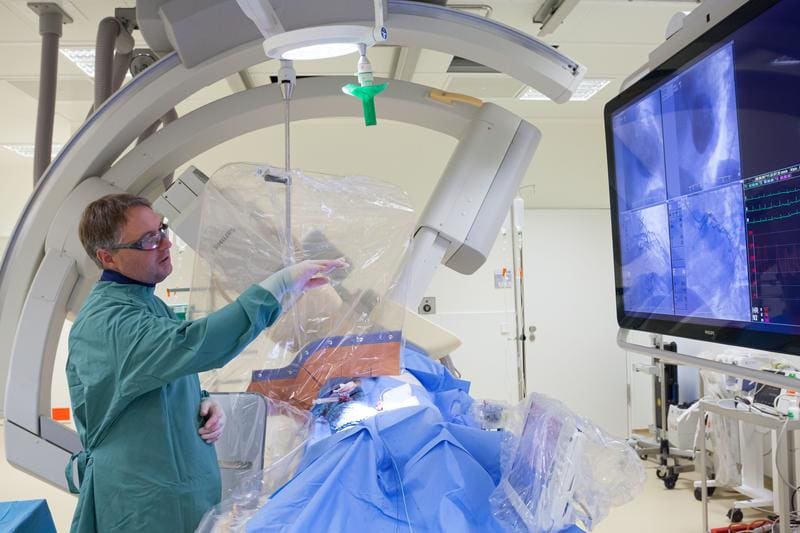Drug-coated balloon catheter can also replace stents in larger heart vessels
Even with larger constricted blood vessels, the balloon catheter coated with medication achieves long-lasting good therapy results. As a comparatively minor procedure, the procedure also offers an effective alternative to the stent here. These results of the working group of cardiologist Professor Bruno Scheller from Saarland University have now been confirmed by an international study with more than 3,300 patients, which was presented at the largest congress for catheter-assisted treatment of heart disease TCT in San Francisco, USA. Bruno Scheller developed the method two decades ago and has continuously improved it with his research ever since.
The drug-coated balloon catheter (DCB) has established itself internationally as a therapeutic method. A wafer-thin plastic tube is inserted into the vessel, a tiny balloon is inflated at its tip, and the vessel wall is carefully widened. The trick is that during this stretching, the drugs with which the balloon is coated are transported deep into the stretched vessel wall. “If you widen a vessel with a simple balloon catheter, it often narrows again because the site is overgrown again. The drugs in the special coating, on the other hand, remain in the vessel wall. They work there for weeks and months and effectively prevent new deposits,” explains heart specialist Professor Bruno Scheller from Saarland University. He invented and developed this procedure, which is now one of the most important therapies for vasoconstriction, together with Professor Ulrich Speck from the Berlin Charit├®, who is now emeritus.

For smaller vessels up to 2.75 millimeters in diameter, a large number of clinical studies have already shown that the drug-coated balloon catheter is equivalent to or even superior to coated stents. The process is used millions of times in practice. In Asia in particular, DCB therapy has already replaced almost half of drug-coated stents. The results on small coronary vessels have been published by Bruno Scheller and colleagues in recent years in leading journals such as The Lancet (Lancet. 2018 Sep 8; 392(10150): 849-856. Lancet. 2020 Nov 7; 396(10261): 1504-1510) and European Heart Journal (Eur Heart J. 2025 May 2; 46(17): 1586-1599). This year, an international group of experts, the “Academic Research Consortium” (ARC), with the significant participation of Professor Scheller, gave recommendations for therapy with coated balloon catheters in the European Heart Journal (Eur Heart J. 2025 Jul 7; 46(26): 2498-2519) and in the Journal of the American College of Cardiology (J Am Coll Cardiol. 2025 Oct 14; 86(15): 1170-1202).
Editor: X-Press Journalistenb├╝ro GbR
Gender Notice. The personal designations used in this text always refer equally to female, male and diverse persons. Double/triple naming and gendered designations are used for better readability. ected.




